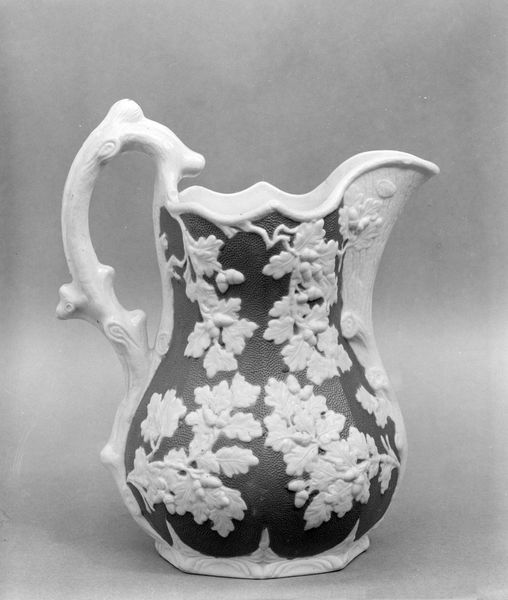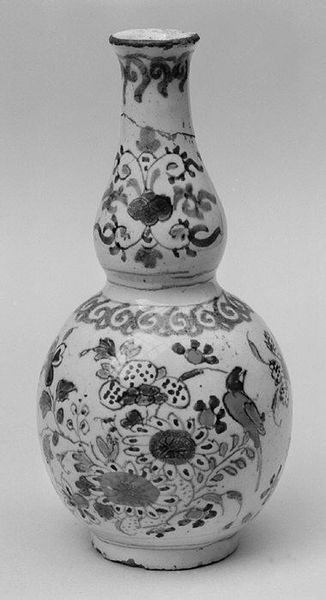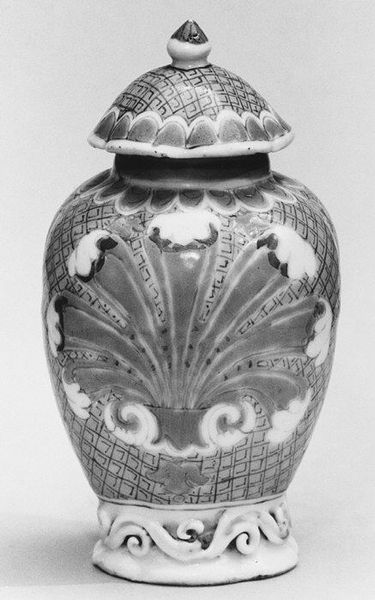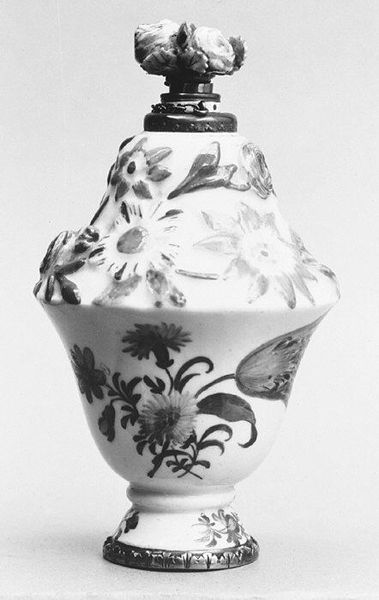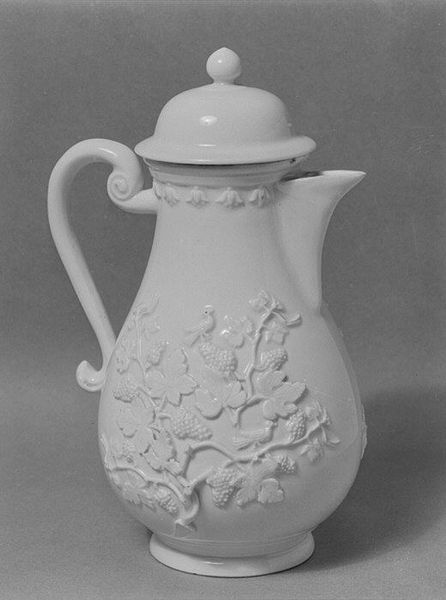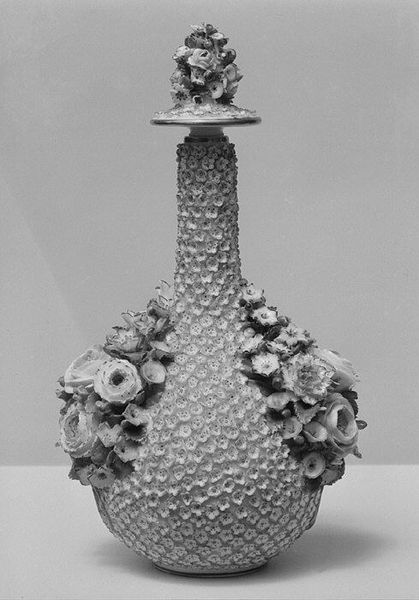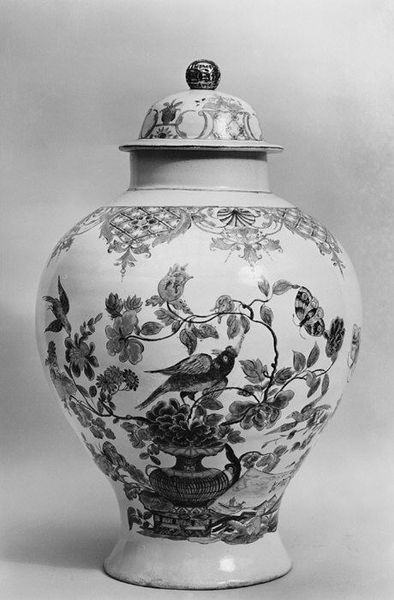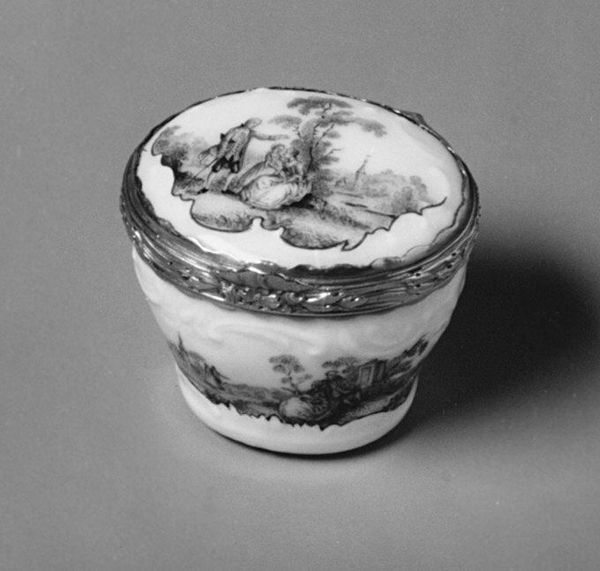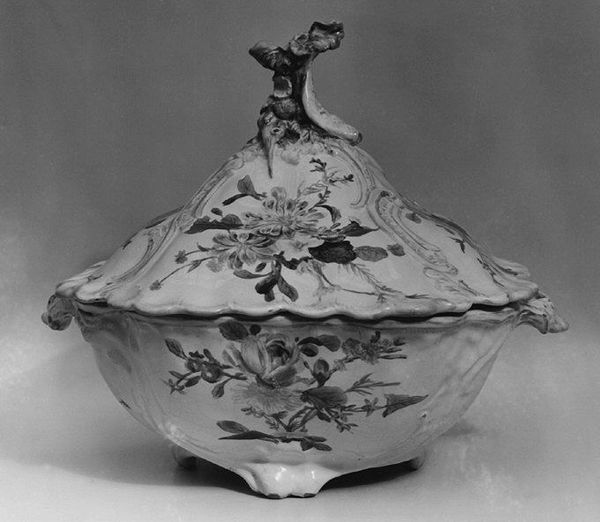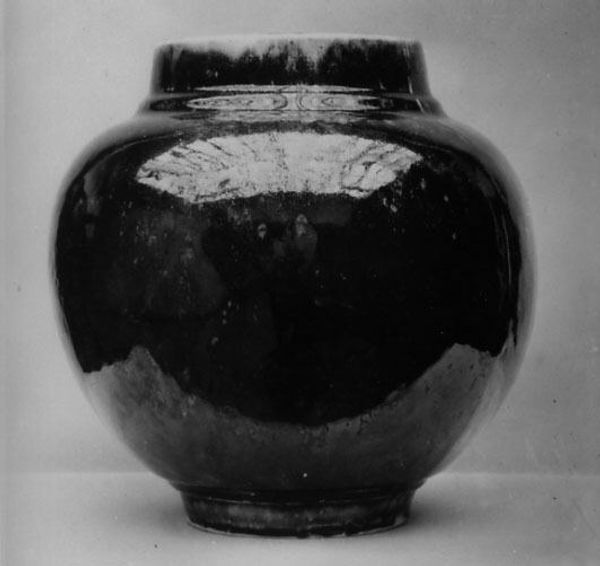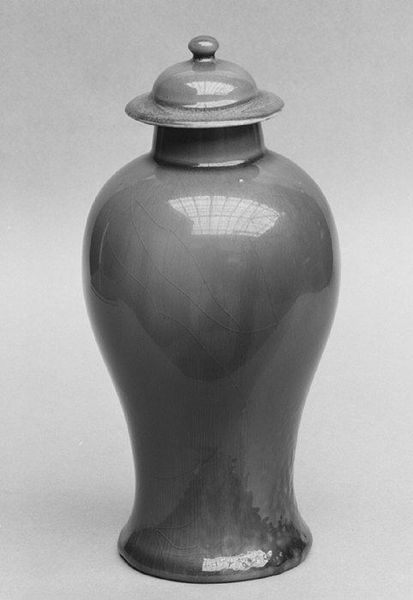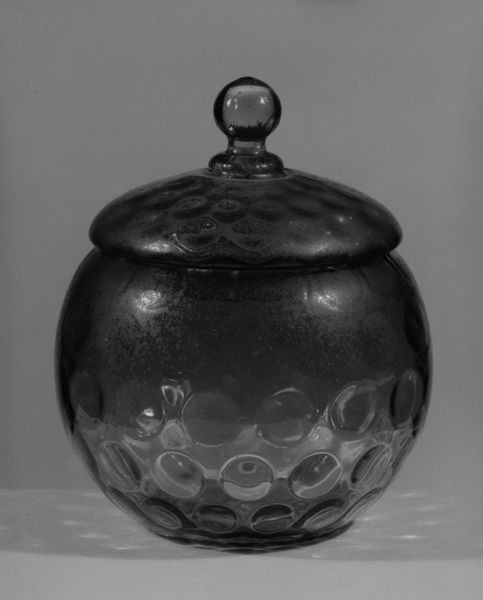
ceramic
#
byzantine-art
#
asian-art
#
ceramic
#
geometric
#
decorative-art
Dimensions: H. 3 3/16 in. (8.1 cm)
Copyright: Public Domain
Editor: Here we have a charming little "Bon-Bon Vase," dating back to 1800, crafted by Eiraku Hozen. It's ceramic, residing at the Metropolitan Museum of Art. I'm immediately drawn to its gentle, almost shy, presence. Those swirling, low-relief designs give it such an intimate, tactile quality. What whispers to you when you see this, Curator? Curator: Oh, "whispers" is perfect! It reminds me of a forgotten melody, something heard through a closed door. The ceramic is a kind of skin, isn’t it, hugging the form, each tendril a thought made solid. You know, Hozen lived during a period of artistic revival, and his work always strikes me as a dance between tradition and newfound freedoms. Doesn’t the intricate detail evoke the past, while the smooth curves suggest a playful lightness? What secrets do you think it held? Perhaps it lived a past life on display for visiting dignitaries and wealthy merchants, showcasing confections, as the name implies. Editor: That tension is really palpable now that you mention it! The swirling detail looks almost organic. And the contrast between its potential uses is so evocative. I can imagine something as extravagant as sugared almonds, or maybe something simpler, more personal - love letters? Does this kind of craftsmanship tie it to similar works of the time? Curator: Absolutely. These types of forms with raised patterns link back to even older Asian traditions, yet the elegance is pure Hozen. But more than technique, it’s the feeling, right? It's that sense of a contained world, hinting at the secrets we carry, the beauty we choose to reveal. Editor: I love that—"contained world.” Thanks for illuminating its layers, Curator. Curator: My pleasure. I’ll think of it now every time I'm curating secrets in a box in my office. It has changed how I experience that piece, as well.
Comments
No comments
Be the first to comment and join the conversation on the ultimate creative platform.
